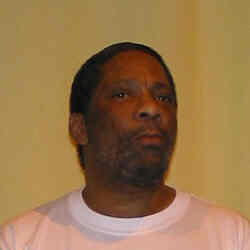
1949 - 2006
Joseph Lewis Clark
Summary
Name:
Joseph Lewis ClarkYears Active:
1984Birth:
January 15, 1949Status:
ExecutedClass:
MurdererVictims:
2Method:
ShootingDeath:
May 02, 2006Nationality:
USA
1949 - 2006
Joseph Lewis Clark
Summary: Murderer
Name:
Joseph Lewis ClarkStatus:
ExecutedVictims:
2Method:
ShootingNationality:
USABirth:
January 15, 1949Death:
May 02, 2006Years Active:
1984bio
Joseph Lewis Clark was born on January 15, 1949, in the United States. Little is publicly documented about his childhood or early family life, but records indicate that he had a troubled upbringing. He spent time in the juvenile justice system and had an extensive criminal record before committing the murders for which he was ultimately executed.
Clark's intelligence was reported to be borderline, with an I.Q. of approximately 75. Psychiatric evaluations and medical records suggested that he suffered from acute brain damage and chronic mental impairment. His mental condition may have been worsened by drug abuse, poor life choices, and a lack of access to proper education or mental health services. These factors potentially made him more vulnerable to impulsive behavior and unable to make sound decisions under pressure.
In adulthood, Clark struggled with addiction and poverty. By the early 1980s, he was heavily involved in criminal activities, including theft and assault.
murder story
On the night of January 13, 1984, Joseph Lewis Clark entered a gas station in Toledo, Ohio, around 9:00 p.m. He was armed with a .32 caliber revolver. The attendant, David A. Manning, was working behind the counter. Clark demanded money, and Manning complied by handing over cash from the register. Unsatisfied, Clark accused Manning of holding back additional money. Manning then gave him an envelope containing more cash. Despite the compliance, Clark shot Manning and fled the scene with only sixty dollars.
Three days later, on January 16, 1984, Clark was arrested after allegedly assaulting and robbing a bank in Ohio. During the arrest, a .32 caliber revolver was found in his coat pocket, linking him to the gas station murder. While in custody and aware he was a suspect in Manning’s death, Clark attempted suicide by hanging himself in his jail cell. He was rushed to the hospital and survived.
On January 23, 1984, after being discharged from the hospital, Clark was taken to the Toledo Police Detective Bureau. There, he was read his Miranda rights twice and proceeded to confess to killing David Manning. He also admitted to the separate murder of Donald Harris, a convenience store employee, though he was not formally convicted for that killing.
His legal team later argued that Clark’s confession was not voluntary. A psychiatrist, who had reviewed Clark’s records (but had not examined him in person), testified that his borderline intellectual functioning and mental impairment due to the suicide attempt may have made him especially vulnerable to pressure. The defense claimed that Clark was not mentally competent to waive his rights.
The prosecution countered with testimony from police officers and Clark’s treating physician, who argued that he was lucid and capable of understanding his rights. The court ultimately sided with the prosecution and ruled that Clark’s confession was admissible.
Clark was convicted of murder and sentenced to death on November 28, 1984.
His execution, however, became infamous for the horrifying malfunction of the lethal injection procedure. On May 2, 2006, prison staff spent over twenty minutes trying to locate a vein for the injection. When the chemicals finally began to flow, Clark's vein collapsed, causing his arm to swell. In pain, he pushed himself off the gurney and said, “It don’t work!” Witnesses later reported groans, screams, and disturbing noises coming from the chamber as staff struggled for another thirty minutes to find a new vein. Joseph Clark was finally declared dead about ninety minutes after the execution began, a process that typically takes less than fifteen minutes. His mother later filed a lawsuit against the Ohio Department of Corrections, claiming her son had suffered needlessly due to poor planning and negligence.